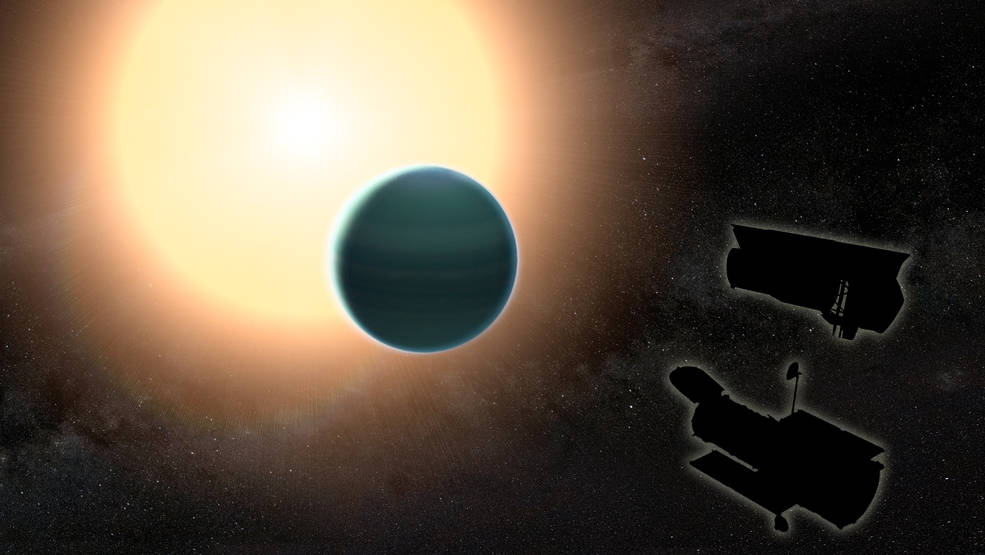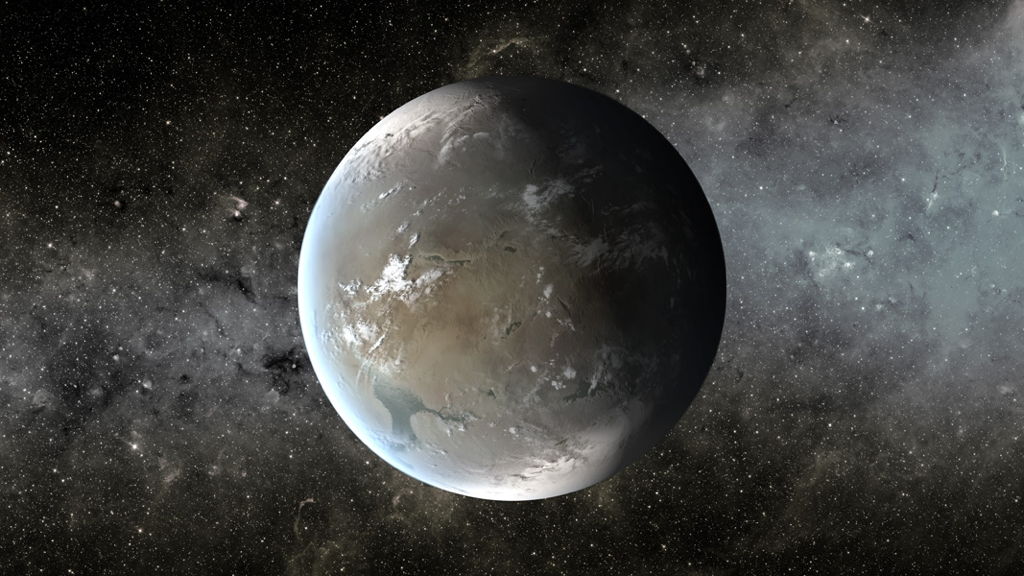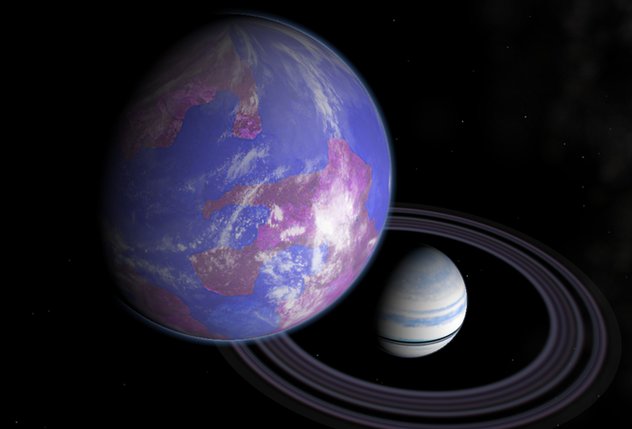A new study has revealed that the distant planet HAT-P-26b has a somewhat primitive atmosphere that’s made up mostly of helium and hydrogen. Observations taken from NASA’s Hubble and Spitzer space telescopes confirmed that the planet orbits a star that’s around twice as old as the sun. It’s the most details analysis to date of a ‘warm Neptune’ and researchers are adamant that HAT-P-26b has a strong water signature and is relatively clear of any clouds.
This exciting discovery will help us uncover details about the birth and development of other planetary systems. “Astronomers have just begun to investigate the atmospheres of these distant Neptune-mass planets, and almost right away, we found an example that goes against the trend in our solar system,” said Hannah Wakeford, lead author of the study and a postdoctoral researcher at NASA’s Goddard Space Flight Center.

The researchers used data from transits to study the atmosphere of HAT-P-26b and figure out the chemical composition of the planet’s atmosphere. “To have so much information about a warm Neptune is still rare, so analyzing these data sets simultaneously is an achievement in and of itself,” said co-author Tiffany Kataria of NASA’s Jet Propulsion Laboratory. From the water signature that the researchers collected they managed to calculate the planets metallicity. This indicates how rich a planet is in terms of heavy elements such as helium and hydrogen and gives us clues as to how it formed in the first place. Scientists use the sun as a point of reference to compare planets by their metallicities. While Jupiter has a metallicity of around 2 to 5 times that of the sun, Saturn is almost 10 times that. Neptune and Uranus may be smaller than these two gas giants, but their metallicities are around 100 times greater than that of the sun.
So it seems that the larger the planet, the lower its metallicity. Scientists figure that the reason for this is because when the solar system was first being formed Neptune and Uranus amalgamated near all the gas and debris that swirled near the sun and would have been bombarded with debris that was rich in heavier elements. Whereas Jupiter and Saturn formed in a much warmer climate and would have experienced less icy debris. The problem is that HAT-P-26b bucks the trend as its metallicity is only about 4.8 times that of The second author of the paper, David K. Sing of the University of Exeter said, “This analysis shows that there is a lot more diversity in the atmospheres of these exoplanets than we were expecting, which is providing insight into how planets can form and evolve differently than in our solar system.”
More News to Read
- Is Cryogenic Sleep the Best Option When Implementing Interstellar Traveling?
- Are Dwarf Planets the Key to Finding Alien Life?
- Intricate Brain Surgery Carried Out Successfully in Under 3 Minutes Thanks to this Robot
- How Nvidia’s Artificial Intelligence Will Team up With CCTV to Analyse Your Every Move
- NASA Considers Multiple Proposals for Unmanned Solar System Exploration











